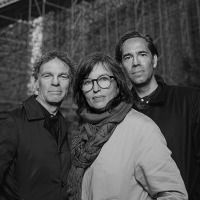Description of project by MVRDV
Design has become and will be more and more the keyword of our world and our next worlds. The word will be the carrier of the thinking processes towards new societies. It is about the phase before production. It is about the thinking before the making. Design products change our world and so do the machines that produce new products. A society led by design is under endless construction and in an expanding smartening universe, there is an emergence of a new world of digitized making.
How to convey that thought? How to experience that? That small thing are able to change the world..... and that big things can change small ones sequentially. What changes can we imagine? How do they interrelate?
MVRDV’s design for the main exhibition hall of the Sea World Culture and Art Center located in Shekou, Shenzhen responds to the biennial theme; ‘Minding the Digital’ and considers the myriad forms of digital creativities that are critical to China’s shift from a historic manufacturing centre to its current reinvention as an innovative hub. The design draws on and also reflects upon the central question of how to identify multiple design directions generated by digital thinking? To answer this, MVRDV has developed a labyrinth located over two floors that individualise and differentiates the display environments for designs and designers, whilst at the same time creates a synergy between both floors which gives different perspectives and experience from either within the exhibition hall or viewing from above.
The exhibition hall comprises of two levels:
LEVEL 1: THE PRODUCTS
On level one, a labyrinth of ideas is made. This floor is designed as a maze of rooms that each show of designers and designers are contributing the making of a new world. They all have individualised foucs so need individual rooms to reflect on this. Visitors however can go from room to room to get further acquainted with their works and understand them. All of the rooms have black interiors to give central focus products on display.
LEVEL 2: THE MAKERS
On the second floor and above the individualized display spaces below, stairs lead to an upper level with a glass floor showing off the makers, products and designers below. It becomes akin to a ‘dance floor’ where visitors can experience walking over (hi)stories. Here the visitor can interact with what goes on below as well as encountering a space for future products. It is a beautiful space illuminated from below.
THE GENERATOR
The inventions of the past somehow interrelate and this is somehow described as an open source society that promotes showing. and an awareness of what others are doing and thinking. The generator is a place for encountering the interrelatedness of the past and present whilst looking to the future.
TROY, THE EVOLUTIONARY CITY
Layer after layer new societies are being built and the proposal here for Design Museum might be likened to Schliemann’s excavations in Troy, that showed the evolutions of history and the making of the city. The future is made by inventive ideas that can lead to the emergence of the evolutionary city.
All these rooms, ideas, products and makers might be seen as offering a panoramic view on the current making culture and how design/designers help construct a brave new world.





































